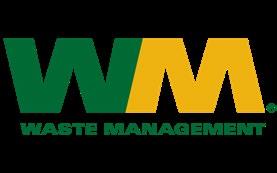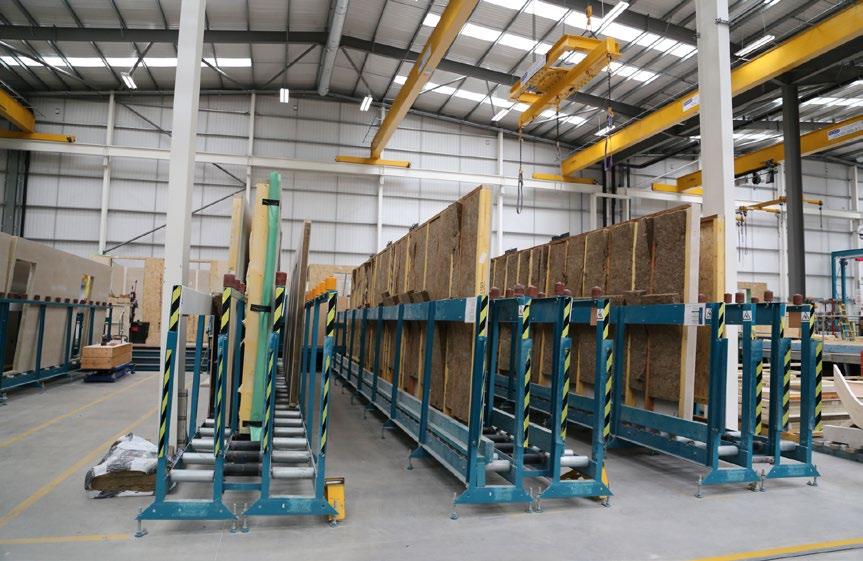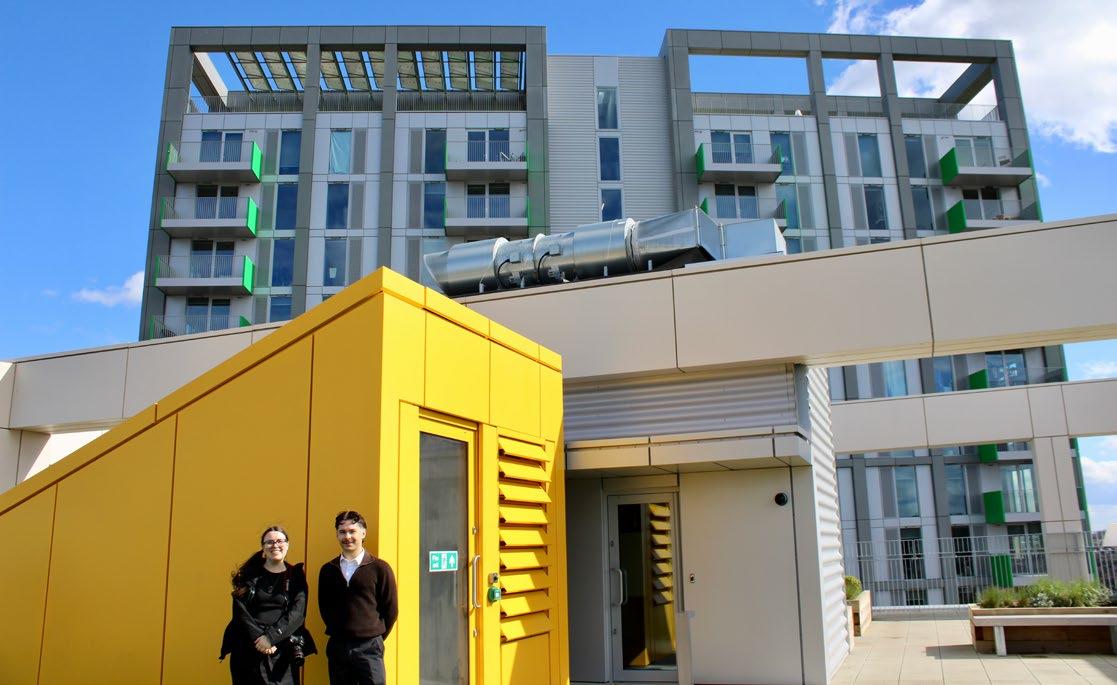




One of the most important ESG factors to consider is climate risk. When it comes to climate risk, the Fund’s goal is as follows:
To protect the investments from climate change risk, identify opportunities to both invest in and benefit from the transition to net zero, and secure a sustainable financial future for the Fund
One of the Fund’s investment beliefs is as follows:
In order to protect the Fund’s investments into the future, the Fund supports a global warming scenario of well below 2°C, and states an ambition to achieve net-zero carbon emissions across all investment portfolios by 2050
In March 2021, in the Fund’s best financial interests, we made a decision to set a net zero by 2050 goal for the investment portfolios. Our climate risk work is based on scenario modelling, which enables us to put numbers around the risk, and make decisions based on what is the best financial outcome for the Fund. Managing climate risk is about more than just decarbonisation, we also focus on driving positive change through engagement, and identifying the investment opportunities which are presented by the transition to net zero. This report aims to bring our approach to life by sharing examples of the kind of work we do.
If the Fund is invested in companies which aren’t prepared to adapt to the challenging landscape of the future, these companies will likely fail and the Fund will lose money
Chris Moore, Investment and Accounting Team Lead at WPF, speaking in the Fund’s film about purposeful pensions
Transparency and information sharing
We always act with the long term in mind, whether we are setting our investment strategy, planning improvements, or working towards our net zero by 2050 goal
Biodiversity and nature are closely linked to climate change, and scientists believe that there can be no net zero future without a reversal of biodiversity loss. We are in the process of developing ways to manage biodiversity and nature-related risks, alongside identifying investment opportunities in this area. We have broadened our reporting to include information and case studies around nature, and this is our first ever Climate and Nature Report. We hope you find the report informative.
Getting to net zero is not simply about decarbonising our portfolios. In order to give ourselves the best chance of success, we tackle this issue from many different angles:
We focus on our top emitters, to deliver maximum impact
We work with our investment managers to evolve their approach
We allocate money to renewable infrastructure and climate solutions
We have a plan to divest from all fossil fuels by 2030, and ensure all remaining holdings can transition
We investigate significant sectors, to ensure we are investing in forward-looking companies
We have developed a framework to understand our exposure to biodiversity risks
We transparently report on the work we have been doing
The information in this report is intended to help illustrate the wide range of work that we do, alongside monitoring our decarbonisation progress. Through this work, we aim to achieve real World change, and create a sustainable future for our Fund.
Would you like to learn more about how we identify, manage and embed climate and biodiversity risks in our strategy? Flip to page 31 to take a look in our detailed Appendix!
Our goal is to decarbonise from our baseline position at 31 December 2019, and achieve net zero by 2050. The Fund's baseline position for decarbonisation is calculated as follows: What has been included?
39.9 TCO2E/ $M INVESTMENT Calculation
Carbon footprint (tCO2e/$m investment – measures the emissions impact of a portfolio per $1m invested):
We use the carbon footprint metric to measure progress against the targets. This is our preferred metric due to the link to real world absolute emissions, and it also provides good comparability with other investors. We also hold ourselves accountable against our climate commitments – see more in the next section!
In order to get to net zero by 2050, we have made the following commitments:
commit to engaging with our top 10 emitters and reporting transparently on our findings.
We have set a target pathway to decarbonisation however we acknowledge that progress will not be a smooth journey. The following graph shows our targets, and our actual progress to date:
Target Actual Carbon Footprint
Although we are currently slightly behind target, the carbon footprint has moved in the right direction since last year and we are now closer to our target. As mentioned above, we expect that our decarbonisation journey will not be completely smooth. In order to maintain momentum with our progress, we look at individual holdings which have a high carbon footprint to understand their position in our portfolio, and to be assured that they can be a valid part of our journey to net zero. This is covered in more detail later in this report.
We also look at things from a top-down perspective – we look at portfolios as a whole, and ensure that the managers for those portfolios are doing enough to challenge the companies they hold and to meet the decarbonisation targets which they have set. In the light of progress over the last year, we will continue to work towards our current target.
Check out our footprint analysis section on page 7 for more insights!
28.7% of our long-term strategic allocation is to “green” assets –on track to meet our target of 30% by 2025
86% of our property fund investments have set a target of Net Zero by 2050 or earlier.
Our emerging market equities portfolio is a large part of our carbon footprint. In the western world, we have outsourced a lot of our manufacturing to emerging markets, and with that we have effectively outsourced a large amount of our emissions. This is therefore a global issue, and supporting emerging markets to transition is a vital part of the journey to net zero.
We have collaborated with the manager of this portfolio, Ninety One, to set ambitious decarbonisation targets.
Read more here!
Paris-aligned passive
Global sustainable equities
Global high alpha equities
Emerging market equities
This portfolio passively tracks a Paris-aligned benchmark, which is calculated in a forward-looking way, incorporating higher weightings to companies with a more compelling transition plan, helping us to achieve our net zero goal!
The managers in our global sustainable equities portfolio have selected companies which are helping to finance the transition. Some of these companies may have higher emissions now, but are investing in technologies which will help the economy decarbonise in the future.
Our global high alpha portfolio has a footprint which is half that of its benchmark index, the MSCI All County World Index. This is due to the portfolio having higher weightings to sectors like technology, and low weightings to sectors like energy.
The following diagram shows how our Top 10 emitters and remaining fossil fuel holdings contribute significantly towards the active equity carbon footprint, even though they only make up a tiny proportion by value!
Total active equity footprint.
Top 10 emitters = 48% of footprint, 3% of value.
Fossil fuel holdings = 20% of footprint, 1% of value.
Our carbon footprint has REDUCED BY 31% from 2019 to 2024!
DID YOU KNOW?
We currently allocate OVER 10% of the entire fund to renewable infrastructure and climate solutions!


As part of our journey to net zero, it’s important that we demonstrate the engagement we are doing to understand the highest emitters in our portfolios.
We use a variety of tools to assess which holdings to prioritise for engagement:
• Reviewing assessments by Climate Action 100+ (CA100+) and the Transition Pathway Initiative (TPI) to identify which companies have the poorest scores across the full range of metrics – these include scores on target setting, strategy, climate policies etc as well as the company’s actual transition alignment.
• Emissions data, to identify which companies are the heaviest emitters.
• Identifying holdings which meet our definition of being a fossil fuel company.
These tools provide the foundations to our engagement, we analyse and challenge the data to build a well-rounded understanding of the highest emitters, to understand how future-proofed these holdings are. We may be happy to invest in a highly emitting company if our investment can help finance its transition to a low carbon economy. We may be less satisfied with the inclusion of a company which is unable or unwilling to transition, as this presents a financial risk to the Fund. Any concerns will be raised with the investment manager that manages the appropriate mandate. Through our engagement, we can understand what work is being achieved to reduce emissions. The position is then monitored on an ongoing basis.
By using these tools, we have outlined the Fund’s top 10 companies for engagement. The top 10 listed below accounts for around 48% of the Fund’s entire listed active equity emissions.





LG was one of our top 10 emitters last year and we maintain a positive outlook on LG’s ability to transition to a low carbon economy. LG’s affiliate, LG Energy Solutions, is the second largest manufacturer of EV batteries globally.
As Asia’s largest oil and gas producer, we were dissatisfied with PetroChina’s approach to achieving ‘near’ zero emissions by 2050. Following engagement with Ninety One, we were pleased to learn that since this data was compiled, PetroChina has now been sold.
Waste Management are demonstrating a strong commitment to decarbonise and investment in transitioning their business to a low carbon economy. Significant improvement can be seen in their target setting and actual carbon reduced.
One of Delta Air Lines subsidiaries is Monroe Energy, an oil refinery business which specialises in the production of jet fuel and other products, and thus has >10% of revenue from fossil fuels. As an airline, Delta faces an enormous decarbonisation journey. Delta appears to play a key role in lobbying efforts and investment in sustainable aviation fuel (SAF). We are satisfied with Delta’s focus on SAF, electrification of ground fleet and reducing waste and single use plastic on flights. We will continue to monitor Delta’s journey and Monroe Energy to ensure adequate progress is made.
As the largest pork company in the world, there are appropriate concerns on WH Groups emission intensity. WH Group acknowledges the risk associated with sizable global GHG emissions in the agriculture sector. WH Group's focus is exploring emerging low carbon technologies to assist with their transition and considers the feasibility and returns to reduce failure rate. WH Group is anticipated to include scope 3 emissions in their climate reporting which demonstrates a commitment to decarbonise its value chains. WPF, alongside Brunel, will closely monitor WH Group's progress through Brunel's physical climate risk engagement project over the next year.




Please see below for a deeper look at our investment rationale for Next Era Energy.
Our position on OCI has not changed from last year. OCI’s forward-looking corporate strategy is squarely focused on providing solutions to the energy transition. The majority of OCI’s future capital expenditure will be invested in various lower carbon plants and facilities.
We have asked Brunel to sell this holding*.
Please see the case study below for more information.
As an oil sands company, MEG faces significant transition risks, and we cannot see how its extractive business model can be part of a net zero future. We have asked Brunel to sell this holding
Whilst there are significant challenges for Longyuan Power transition, there have been positive efforts in decarbonising their business. These include development of renewable energy and innovative technologies for clean energy.
* Although we have asked Brunel to sell this holding, as we are part of a pooled portfolio, it may not be possible to action this request. We hope that Brunel will use our request to sell to strengthen and support their engagement on these holdings with the underlying managers.
As at December 2023, we held c.£5m in NextEra Energy, which contributes 4% to our active equities carbon footprint. NextEra Energy has been a pioneer in renewable energy, primarily focusing on wind and solar power generation. Through its subsidiaries, such as Florida Power & Light and NextEra Energy Resources, the company has aggressively expanded its renewable energy portfolio, making it one of the largest producers of wind and solar energy in the world.
Whilst Next Era Energy is a top emitter in our portfolio, they are driving the transition by:
Solar and Wind Expansion: Plans to expand solar capacity to over 90,000 MW and add more than 50,000 MW of battery storage.
Green Hydrogen: Convert 16 GW of existing natural gas units to run on green hydrogen.
Vehicle Fleet: Convert 60% of light-duty vehicle fleet to electric or plug-in hybrid by 2030 and achieve 100% zero-emission vehicles by 2045.
Energy Efficiency: Continue to invest in energy efficiency programs, reducing peak demand and overall energy consumption.

We believe our investment in NextEra is supporting a genuine transition with an organisation committed to reducing their emissions and mitigate the systemic risk their current business model presents.
Overall, NextEra Energy’s efforts exemplify the proactive steps the energy sector can take to combat climate change and drive the global transition towards a sustainable, low-carbon future.
Shell is one of the world’s largest oil and gas companies, operating in over 70 countries. At December 2023, we had c.£2.7m invested which contributes 3% to our active equity carbon footprint. Shell was one of our Top 10 Emitters last year and whilst we cautiously accepted the investment rationale at the time, we committed to continue to monitor their progress. Over the course of the last year, our concerns have mounted.

Since our last report, asset managers and environmental groups have expressed their concerns with Shell’s targets being insufficiently ambitious to meet the Paris Agreement goals, particularly with the lack of scope 3 emissions targets and accountability. Shell's continued investment in oil and gas projects shows they are not being proactive in actioning genuine change in line with their climate commitments.
We were pleased with Brunel’s proactive stance on holding Shell to account. In 2023, Brunel joined 26 other investors to co-file a shareholder resolution, which called for more rigorous climate targets and to cover scope 3 emissions. The vote at Shell was supported by 20% of shareholders and was therefore not adopted. Shell argue that this climate resolution would negatively impact the financial stability of the company, the energy transition, and energy security. We fundamentally disagree with Shell’s position.
In light of Shell’s rejection, Brunel used our vote to vote against the board members in response to its misalignment on appropriate climate targeting setting. This is an example of strong stewardship.
Ultimately, we do not believe that Shell have given us sufficient conviction in their ability to transition, and we have asked Brunel to sell this holding. We hope that Brunel can use this request from us to help hold their investment managers to account and drive positive change.
The decarbonisation progress in the section above is for equity holdings only. We will expand target setting across other asset classes, but for now data availability is a big challenge. Even where data is not fully available, we still engage across all asset classes, and make an assessment of how each of our portfolios is doing.
The following table shows our assessment of our entire strategic asset allocation against various climate criteria. This table shows that, as expected, we are making strong progress in our equity portfolios, and that there are still challenges with data availability in private markets. We are working with all our managers to drive forward improvements.
Paris Aligned Passive Equity
Global High Alpha Equity (Active)
Global Sustainable Equity (Active)
Private Equity
Emerging Markets Equity
Multi Asset Credit
Private Lending/Debt
Emerging Markets Debt
Infrastructure (Unlisted)
Private Infrastructure
Infrastructure (Listed)
Secured Income – Long Lease Property
Impact Affordable Housing
Property
Secured Income - Operational Renewables
Gilts
Bank loans
Fully delivering against the Fund's climate objectives
Strong foundations, working towards formal targets/metrics in development/ coverage improving
Actively causing problems for the Fund's climate objectives
Very good progress made towards target setting/ reporting and mettics/high level of coverage
Signficant progress needed by way of target setting, metrics and/or coverage, but no causes for concern
Not available
In 2022, we set a strategic allocation of 7% (c.£220m) of the Fund to renewable infrastructure and climate solutions, in order to take advantage of the investment opportunities that are presented by the transition to net zero. We decided to implement this allocation as an impact portfolio, which we have called “Clops”, short for Climate Opportunities. In implementing Clops, we have taken an innovative approach, by designing a multiasset portfolio, investing across the spectrum of liquidity and asset classes, targeting impact within different time horizons.
Within Clops the portfolio construction contains the following “buckets” with the following aims and measures of success:
OBJECTIVE FOR
To earn superior risk-adjusted returns by investing in a diversified mix of assets which have the intention to deliver real World change by actively supporting the transition to a low carbon economy.
Listed equity, via the Planetary Transition fund managed by Lombard Odier. This will provide highly liquid global exposure to larger companies, through a high conviction portfolio with strong engagement objectives. Lombard Odier have a strong academic backing to their strategy, and we will be measuring the impact through standard carbon metrics, exposure to themes (future electrification, circular economy, and future food systems), engagement statistics, and implied temperature rise – a forward-looking metric.

Listed/unlisted emerging market transition debt, via the Emerging Market Transition Debt fund managed by Ninety One This portfolio will provide financing to companies which are currently highly-emitting on their transition journey. Exposure to emerging markets will increase the impact, as we cannot achieve net zero without emerging markets. In the western world, we have outsourced a lot of our manufacturing to emerging markets, and with that we have effectively outsourced a large amount of our emissions. This is therefore a global issue, and supporting emerging markets to transition is a vital part of the journey to net zero. This portfolio will also allow us to invest in private debt, i.e. lending to smaller companies. This further diversifies the portfolio. We will be measuring impact by looking at the carbon avoided and reduced by the companies we have invested in, calculated by a transparent formula.
Climate tech venture capital, via World Fund, providing an opportunity to invest in startup companies and gain exposure to new technologies and innovation. We will be measuring impact by looking at climate impact targets set by World Fund, who only invest in companies whose business model has the potential to deliver carbon reduction of at least 100MT CO2.


Nature-based solutions, providing exposure to assets which sequester carbon, such as regenerative agriculture or forestry, with a long-term investment horizon. We will be making a specific allocation here soon –watch this space!
Local impact private infrastructure, via the Wessex Gardens fund managed by Schroders Greencoat, a collaboration with other LGPS funds to invest in real assets to deliver renewable energy to the local economy (i.e. South West England) over a long-term time horizon. Measures of success will be deployment of capital in the local area, green revenues, and amount of renewable energy generated.
We will also be using our award-winning comms approach to develop our own bespoke impact reporting to share key impact metrics with our stakeholders in an easy-to-understand format, brought to life with investment case studies so they can understand how the money held to fund their pensions is making a real difference. Look out for our first impact report coming next year!


This portfolio will deliver better outcomes for our members by way of improved risk-adjusted returns, securing a more sustainable future for our Fund. It will help us to deliver against our commitment of net zero by 2050 for all investment portfolios. And finally, this will align with our members views, the vast majority of whom have said that WPF being invested in sustainable and/or low carbon assets is important to them.
LISTED AND UNLISTED DEBT
• Finance currently highly emitting companies on their transition journey
• Emerging markets exposure –make an increased impact
• Diversify the types of companies, projects and time horizon for delivering impact
LISTED EQUITY
• Exposure to larger companies
• Global exposure
• High conviction portfolio
• Drive change and encourage companies to decarbonise
VENTURE CAPITAL
• Invest in start-up companies
• Exposure to new technologies and innovation
• Very forward-looking
Clops portfolio components
NATURE-BASED SOLUTIONS
• Exposure to nature-based assets, such as forestry or sustainable agriculture
• Opportunity to invest in assets that sequester carbon
LOCAL IMPACT PRIVATE INFRASTRUCTURE
• Invest in real assets
• Deliver renewable energy to the local economy
• Read more about this investment on our webapges: £100m commitment to South West renewables – Wiltshire Pension Fund
Assessing the credentials of a fashion company is challenging, as multiple different ESG issues need to be woven together. Examples of issues to consider are as follows:
Carbon emissions, pollution, water usage, sustainable materials.
Labour practices, human rights, equality, diversity and inclusion.
Transparency, ethical business practices, product lifecycle management.
One of our investment beliefs is that we wish to invest in a way that minimises negative impacts on society and the environment, and where possible, makes a positive contribution
Did you know that fashion accounts for 10% of the World’s carbon emissions from human activity ? It is also a heavily polluting industry, which is one of the main drivers of biodiversity loss. As a fund with a net zero by 2050 target, we need to understand how our investments in fashion companies are managing these issues.
From a recent review of our holdings, we hold shares in 16 different fashion companies, at a value of £20m. 90% of this exposure is made up of 5 companies, representing several underlying brands, which is where we focussed our efforts for this report.
We hold shares in 16 different fashion companies, at a value of £20m.
Finding a sustainable way forward for the fashion industry will be an important part of the planet’s journey to net zero, alongside behavioural changes such as excess consumption. To assess how our largest companies are doing, we turned to some valuable industry tools*.
Within our sustainable equities portfolio, managed by Brunel, we hold shares in Kering (£4m). What makes this company more sustainable than its peers?
*Footnote – as part of this case study, we used several industry tools and resources:
• For ESG transparency, we used the data provided by Fashion Revolution’s Fashion Transparency Index 2023, which takes a deep dive into 250 of the World’s largest fashion brands according to their ESG disclosure transparency.
• For human rights/gender performance, we looked at the 2023 Corporate Human Rights Benchmark, and the 2023 Gender Benchmark, which assess companies globally on their human rights and gender equality and women’s empowerment performance respectively.
• For climate progress, we looked to see which companies are signatories of the United Nations Climate Change Fashion Industry Charter Progress Report 2023, and the scores awarded to companies by CDP, a non-for-profit charity that runs the global disclosure system for companies to manage their environmental impacts.
• Finally, we used Forest IQ, which provides datasets on how companies are exposed to and addressing their links to deforestation.
Let’s see how the top 5 fashion companies in our portfolio measure up:
Company Relevant brands
LVMH Celine
Dior
Fendi
Louis Vuitton
Marc Jacobs
TJX TJ Maxx
Kering Balenciaga
Bottega Venetta
Gucci
Saint Laurent
Hermes Hermes
Richemont Chloe
Not Assessed
No data
No data
No data
*Industry tools were used to obtain all scores and information – please see the footnote to this article for more information. Colour coding indicates how companies compare to peers, with dark green being more sustainable through to dark orange being less sustainable.
Based on this information alone, we can see that Kering stacks up well as a company that is setting targets, making progress, and being transparent with stakeholders, and clearly standing head and shoulders above peers, therefore earning its place in our sustainable equities portfolio. All the companies have progress to make, but some more than others in this area. The information above will provide us with an improved knowledge of the risks for each company, and we will be discussing these findings with our managers.
LAPFF (Local Authority
Pension Funds Forum, of which WPF is a member) have begun a programme to engage with luxury goods retailers, specifically on their practices around human rights risk management in their supply chains, with an aim of encouraging better due diligence and disclosure.

By analysing the environmental and social governance (ESG) performance of key brands within our portfolio, we're advancing toward our net zero by 2050 goal and managing social risks. Notably, Kering emerges as a leader in sustainability efforts, reflecting our investment strategy's alignment with our environmental and social objectives. This evaluation reinforces the importance of ongoing engagement and investment scrutiny to promote a more sustainable and responsible fashion industry, guiding our future actions towards positive change.
As a Fund, we have set a target of net zero by 2050 for all our investment portfolios, but why does this matter for affordable housing? Simply put, the world is changing, and our investments need to be ready to keep up, or we will lose out financially.
Modern methods of construction are more efficient, as well as being environmentally beneficial. And developments which are sensitive to the climate are also more desirable for residents – for example an energy efficient home is less costly to run, and homes which have access to amenities such as EV charging are likely to be more attractive to buyers. Building homes to a high environmental standard also future-proofs properties against potential changes in regulation, minimising the risk of costly and disruptive retrofits being required. Although our affordable housing portfolio mainly focusses on positive social impacts, we are also seeing significant environmental progress by our managers, and we will continue to hold them to account on matters related to climate risk.
The examples highlighted in this report show that the managers share our view, and that properties with improved environmental credentials are an all-round winner, benefitting people, the planet, and profits.
83% OF HOMES IN OUR PORTFOLIO ARE B RATED, OR ABOVE Energy Performance Certificates (EPCs) tell you how energy efficient a building is and give it a rating from A (very efficient) to G (inefficient). They provide an indication of how much it is likely to cost to heat and light, and what its carbon dioxide emissions are likely to be.
Residents less likely to leave or default on rent, properties future-proofed.
Improved resident satisfaction, cheaper energy bills, better financial security.
We're getting people into more affordable and more energy efficient homes
Ben Fruhman, Affordable Housing Fund Transaction Manager at CBRE, speaking in the Fund's film about Purposeful Pensions
Reduced carbon emissions, biodiversity benefits.


Modular housing uses zero-waste construction and innovative materials to minimise the environmental impact.

Communal heating and solar panels reduce service charges for residents.



Installation of heat pumps and solar panels future-proofs housing and saves residents on their energy bills.

At Wiltshire Pension Fund we recognise the diverse strategies and initiatives available to tackle high-intensity emissions. In this case study, we have explored how Carbon Markets as a tool, may play a significant role in reducing emissions across our investment portfolio that aligns with our goal of strong risk-adjusted returns and our commitment to environmental sustainability.
Carbon Markets have emerged as a pivotal mechanism in the global effort to combat climate change and is essentially a market-based approach that puts a price on carbon emissions. This approach towards mitigating climate change, in theory, provides economic incentive for companies, countries and individuals to reduce their carbon emissions. The most commonly used carbon market approaches are:
CAP AND TRADE: in cap-and-trade systems, governments or regulatory agencies may set a cap on the total amount of emissions allowed within a certain sector. Companies are then allocated or can purchase emission allowances within this cap, which they can trade with each other. This system creates a market price for carbon emissions, with the main idea being to push companies to innovate and reduce emissions.
CARBON OFFSETS: this approach allows companies to invest in environmental projects such as reforestation, renewable energy and carbon capture and storage.
The effectiveness of carbon markets in reducing emissions is a topic of ongoing debate. We want to ensure a sustainable transition to net-zero, not just by purchasing carbon offset or credits that allow companies to continue with high intensity emissions.
Nonetheless, we were keen to understand how they may play a role in our decarbonisation journey. We asked our Emerging Market Multi-asset manager, Ninety One, how these tools can and should be used effectively. We were reassured that Ninety One support the investment in high integrity credit markets, but not as a sole strategy to reduce emissions. In fact, companies should be decarbonising their value chains as this is where the biggest impact can be seen.
Ninety One also highlighted to us the 2023 Verra scandal (Verra is a non-profit certifier of carbon credits) where some credits were found to lack integrity which underscores the importance of robust standards and transparency in carbon offset projects. For us, it highlights the need for carbon markets to complement, rather than replace, direct emission reduction strategies within companies' operations.
We are aware that Shell, a holding in our Brunel Global High Alpha portfolio (WPF market value of £2.7m) have been associated with purchasing low quality credits which involved illegitimate credits generated from avoided deforestation projects. We reported on Shell last year and we had some concerns with their ability to transition. This year we believe that engagement with Shell is not being effective, and we have therefore asked Brunel to sell Shell, noting that as part of a pooled fund this may not be possible, but we hope that our request provides additional weight to Brunel's own engagement efforts.
Through one of our newest investment managers, WorldFund (Climate Tech Venture Capital Fund) included in our Climate opportunities fund (£10m commitment), we have invested in Mission Zero Technologies. This company is developing technology to extract carbon from the atmosphere in a more efficient manner. Effective Carbon credit markets are a key component of their business plan to sell this service to industries where emissions may be hard to abate or to accelerate decarbonisation.
As climate targets get closer, the role of carbon markets will undoubtedly become more prevalent, which highlights to us the need to be vigilant when approaching decarbonisation.
Ultimately, we want to see a real decarbonation journey that addresses the companies own operations and its value chains, not by purchasing credits to artificially reduce emissions. If every effort has been made to reduce emissions and emissions persist or are unavoidable, credits can be a positive indication of the company’s intent to reach netzero. To reduce our risk as an investor and protect our returns, only high integrity carbon markets can be used as a tool to decarbonise sustainably.
In this regard it is also not a tool we are currently considering as part of our strategy in order to achieve our own net zero targets, to offset financed emissions.


This is most often spoken about with regard to fossil fuel investments, and there is significant pressure on LGPS funds to divest from all fossil fuel companies. This pressure comes both from scheme members and wider campaigns. We believe that selective divestment from fossil fuel companies which are unable and/or unwilling to transition is an important tool, alongside active engagement, in ensuring that we are able to achieve our net zero goals.
Divestment = the intentional act of moving money and investments out of a company.
As a long-term investor, WPF’s goal is to protect the investments from climate change risk, and safeguard the financial future of the Fund. We support a global warming scenario of well below 2°C, and have an ambition to achieve net-zero carbon emissions across all investment portfolios by 2050. We do not see a long-term place for fossil fuel investments in our portfolios, and will work towards being fully divested from these companies by 2030. In the short term we will continue to monitor our holdings in these companies, to ensure that any such investments are helping to finance real-World change. Alongside this, we will continue to invest in renewable infrastructure and climate solutions, to help create sustainable replacements for traditional fuel sources, and contribute positively towards ensuring energy security. This approach aims to ensure that the Fund’s risk of exposure to stranded assets is well managed, and that the Fund can benefit from the investment opportunities presented by the transition to a low carbon economy.
Through the Fund’s allocation to the Paris-aligned passive portfolio, some companies are removed from the investable universe if they meet certain criteria. These are as follows:
• Companies with:
» 1% or more of revenues from exploration, mining, extraction, distribution or refining of hard coal & lignite.
» 10 % or more of revenues from the exploration, extraction, distribution or refining oil fuels.
» 50 % or more of revenues from the exploration, extraction, manufacturing or distribution of hydrocarbons, hydrogen and carbon monoxide mixtures present in gaseous state.
• Electricity producers with carbon intensity of lifecycle GHG emissions greater than 100 gCO2e/kWh (50%+revenues).
• Any companies found or estimated by them or by external data providers to significantly harm one or more of the environmental objectives under the “Do No Significant Harm” definition.
» Currently this includes Pure play Coal and Pure play Tar sands companies. The Fund uses these exclusion criteria from the Paris-aligned benchmark as its definition of “fossil fuel companies”, and monitors holdings on this basis.
Due to the nature of investment pooling, there can be barriers to implementing any divestment policy at the current time, due to the fact that pooled portfolios have to contain the same holdings for all client funds, and a consensus position would need to be sought. The Fund’s position has been communicated to Brunel and other investment managers, and the Fund continues to work with Brunel and other client funds in order to advance the approach in this area.
Shareholdings in companies in our portfolio meeting any one or more of the above criteria amounted to less than 1% of the total Fund value1. These companies account for 20% of our active equity carbon footprint.
Many of these companies are covered in our “Top 10” analysis earlier in this report, and we are actively engaging with and challenging our investment managers on all these holdings. A full analysis of our equity holdings in fossil fuel companies as at 31 December 2023 is as follows:





PetroChina, Delta Airlines, MEG, Shell & China Longyuan Power Group
At least 10% revenue from oil (except China Longyuan Power Group, which is at least 50% revenue from power generation with GHG intensity above 100gCO2e/kWh) Mixed –
We maintain a cautious view of Glencore's ability to transition to a low carbon economy despite the slight progress Glencore has made; a view echoed by Legal and General Investment Management, who recently voted against the re-election of Kalidas Madhavpwddi as Director due to the company not meeting the minimum standards with regards to climate risk and management. Glencore's 2024-2026 Climate Action Transition Plan does not provide sufficient reassurance on the company's thermal coal activities and transition alignment. We have asked Brunel to sell this holding* .
Prio SA, formally Petro Rio SA, presents a severe risk in their ability to transition to a low carbon economy. Their underdeveloped climate reduction strategy does not provide WPF with the confidence to support their decarbonization journey. Since this data was compiled, Prio has now been sold.
We are unsatisfied with ConocoPhillips’ approach to Scope 3 emissions and reliance on carbon offsets to mitigate emissions in the longer term. It is unclear how ConocoPhillips plan to redefine their business model for a future a low-carbon economy that does not extract fossil fuels. We have asked Brunel to sell this holding*
Whilst there are some positive improvements to Phillips 66’s decarbonisation journey, we are not satisfied with Phillips 66’s carbon reduction targets and ratings from TPI and CA100+. They do not align with our Responsible Investment Policy. We have asked Brunel to sell this holding*
Neste has a strong TPI score and identified as low risk by Sustainalytics. It is clear Neste Oyj is allocating significant capital and resource to transition and reduce emissions. This includes repurposing oil refineries to produce renewable diesel and sustainable aviation fuel. Given the nature of the business, we will continue to monitor their progress.
For details, see page 9 for our Top 10 Emitters analysis
1 As at 31 December 2023. Please note that this only covers our equity holdings, we are actively working on expanding this analysis across fixed income asset classes, for full transparency.
* Although we have asked Brunel to sell this holding, as we are part of a pooled portfolio, it may not be possible to action this request. We hope that Brunel will use our request to sell to strengthen and support their engagement on these holdings with the underlying managers.

Biodiversity is rapidly gaining attention as an area that investors should be considering. The World Economic Forum’s Risk Report 2024 puts “Biodiversity loss and ecosystem collapse” as the 3rd biggest economic risk facing the world over the next 10 years. The UN has published a report into this area, entitled “Stepping up on Biodiversity, what the Kunming-Montreal Global Biodiversity Framework means for responsible investors” Our net zero by 2050 target and wider investment beliefs mean that this is an area where we need to take action.
In order to identify key areas to look at, we focus on investments in sectors which are particularly impacted, as well as looking at the key drivers of biodiversity loss, as defined by IPBES (the Intergovernmental Science-Policy Platform on Biodiversity and Ecosystem Services). These are as follows:
We approach biodiversity risk in the following ways:
• We are developing our use of frameworks such as TNFD to support us in our understanding of this area.
• We are working with the Brunel pool and our legacy managers to understand where we are exposed.
• Our strategic allocation to renewable infrastructure and climate solutions has the scope to contain nature-related investments, providing the opportunity to earn competitive financial returns whilst also delivering positive impacts to nature.
• We are focusing on the high-impact sectors of agriculture, food & drink and construction in terms of our current holdings.
• Our stewardship efforts will focus on the 5 main drivers of biodiversity loss.
We analysed our holdings as at 31 December 2023 to identify our exposure to equity holdings in high-impact sectors (specifically agriculture, food & drink, and construction). Our total exposure to high-impact sectors amounted to £83m (just over 7% of our total equity holdings), across 125 companies! Most of this was in the food & drink sectors (c.60% of £83m).
Our Climate Opportunities (Clops) portfolio contains an allocation to nature-based assets, to enable us to both invest in and benefit from nature-positive assets.
You can learn more on page 14!
To help us understand our exposure, we have put our investments under the microscope and investigated themes such as regenerative agriculture and deforestation. To learn more, we hope you enjoy the following case studies…

As part of our work to understand our exposure to biodiversity risk, we are focussing on the key drivers of biodiversity loss, as defined by IPBES (the Intergovernmental Science-Policy Platform on Biodiversity and Ecosystem Services). One of these areas is land and sea use change, and a key factor here is deforestation
We are also looking at high-impact sectors in terms of our holdings, one of which is food & drink.

To help us understand our exposure to deforestation, we explored the fantastic data set provided by Forest IQ
This data set investigates >2,000 major companies to see which commodities they are reliant on, their links to deforestation, and how well the companies are addressing this issue.
With such a large data set, we needed to focus, so we began by investigating our exposure to something appetising that we can all relate to – chocolate!
We examined the Forest IQ data to identify the companies which we are invested in where the highest risks lie. We found that we have exposure to 9 companies, including household names such as Lindt and Hershey. Of these 9 companies, 2 are held in our active portfolios (i.e. portfolios which don’t simply track a benchmark index, but contain companies that have been actively selected by the investment managers). These companies are Nestlé (£10m) and Unilever (£2.5m), both of which own a huge number of household name brands. Forest IQ data indicates that both these companies have a high exposure to deforestation risk from cocoa, but that they are managing this moderately well.
This contrasts with the other 7 companies (combined value of £4.1m), which range from high to critical exposure, of which all but one is deemed to have weak risk management in this area. Therefore, we can take some reassurance that the companies that have been actively selected for our portfolios are dealing with deforestation risk better than their peers


We were interested to note that Unilever is held in our sustainable equities portfolio, managed by Brunel.
On their website, Unilever make a clear link between deforestation and sustainable business practices, and have set a goal to have a completely deforestation-free supply chain by the end of 2023. At the time of writing, information on whether this goal had been met was not available.
Unilever state: We are working to end deforestation within our supply chain as this is one of the biggest contributions Unilever can make to create a more sustainable world and maintain consumers' trust in our products.
This goal will be met by focusing on three pillars: transparency and traceability, focused sourcing, and working with farmers and smallholders. Unilever’s impact on the cocoa industry is huge – they note that they buy around 1.5% of the global production of cocoa, mainly sourced from Cote d-Ivoire and Ghana.
One line of work in this area is helping farmers to diversify their crops, as this provides them with better financial security and therefore reduces the risk of them needing to resort to illegally deforesting land to support their families. Unilever have set a target for this work to reach 6,000 farmers by 2025, providing income diversification programmes. This work will also focus on empowering women.
Unilever also take action by stating that they will suspend suppliers who are found to be linked to deforestation, until they have met the company’s requirements.
Nestlé state that they are aiming for deforestation-free supply chains by 2025, and currently report that they achieved 93.4% in 2023 across their primary supply chains. Taking a deeper look, cocoa is still the most challenging supply chain. Nestlé assess the deforestation status of key ingredients as traceable back to regions classified as low risk of deforestation, assessed on the ground, and assessed from the sky (by satellite monitoring). For cocoa, currently 0.0% can be traced back to low-risk regions, and 57.7% is classified as “unknown”. Therefore, although we are pleased to see that ambitious targets have been set, more progress needs to be made.
Nestlé make a strong link between deforestation and net zero on their website: The planet needs thriving forest landscapes. Working toward deforestation-free supply chains is a key component of our net-zero commitment.
In conclusion, our investigation into the chocolate industry's impact on biodiversity, particularly through deforestation, has revealed both challenges and leaders in the journey towards sustainability. The examination of Forest IQ data and case studies of Nestlé and Unilever showcases the complex web of ESG issues that chocolate production entails. While there are significant hurdles, such as achieving deforestation-free supply chains and ensuring ethical labour practices, our focus on companies like Nestlé and Unilever, which demonstrate a commitment to tackling these challenges head-on, offers a hopeful perspective.
In the evolving landscape of sustainable investing, regenerative agriculture emerges as a compelling theme. At its core, regenerative agriculture is a set of farming practices aimed at restoring soil health, enhancing water retention, and increasing biodiversity. By focusing on techniques such as crop rotation, cover cropping, reduced tillage, and organic inputs, this approach offers a buffer against the impacts of climate change, as well as supporting in the fight against biodiversity loss.
The conventional agricultural practices that degrade soil health and biodiversity pose significant risks to food security and supply chains, potentially undermining the stability of investments in the agribusiness sector. In contrast, investments in regenerative agriculture can yield long-term benefits, including improved crop yields, reduced vulnerability to climate impacts, and enhanced brand reputation among increasingly environmentally conscious consumers.
Increased pressure from consumers, investors, and potentially regulators, means that there is a need for businesses in the food sector to transition to a more sustainable model, in line with global goals for a net zero future. Food accounts for around 1/3 of global emissions and is a primary driver of biodiversity loss!
Our investments in the shares of companies in the food, drink and farming sectors (including things like fertilisers and farm machinery), currently amount to a value of just under £50m over 61 different companies!

For PepsiCo, the link between better agricultural practices and the bottom line is clear: Agriculture is core to PepsiCo's business. We source more than 30 agricultural crops and ingredients—such as potatoes, corn and oats—from approximately 60 countries. Creating a more resilient, sustainable agricultural system helps to protect our continued business growth from disruption due to climate change, water scarcity, and other environmental and social risks. It also enhances the lives of agricultural workers and their communities.
(Source: Agriculture – pepsico.com )
As published on their website, the company has set several regenerative agriculture goals, and reports on their progress. For example, one goal is to spread the adoption of regenerative farming practices across 7 million acres (equivalent to all the land used around the World to grow the key crops and ingredients for their products). To date, they report progress towards this goal of >900,000 regenerative acres since 2020.
Within our emerging markets multi asset portfolio, managed by Ninety One, we have shareholdings in food companies of around £12m. We asked Ninety One about WH Group (WPF holding approx. £1.3m), the largest meat producer in China, which has so far only made limited comments around regenerative agriculture, in order to understand whether this potential lack of preparedness was a risk to our investment. Ninety One agree that this is a priority area, and state that “regenerative agriculture and animal farming standards is really a key lever for the company’s broader decarbonisation plan – it’s where nature/ biodiversity and climate meet”.
Smithfield (an American company owned by WH) has identified hog manure as a key biodiversity and emissions risk. Accordingly, Smithfield has implemented manure-to-energy facilities at its hog farms. However, at a WH Group level, company disclosures lack in-depth discussion of biodiversity risks beyond those associated with waste management.
Ninety One have an ongoing engagement with WH to encourage the company to harmonise its sustainability policies across the group and increase transparency on the roadmap and actions for reaching net zero.
It would therefore appear at the current time that much is still to be done to improve sustainability at this company, but we are reassured that Ninety One are on the case.
Engagement work: EOS (on behalf of Brunel) have been proactively engaging with Nestlé to set and pursue goals related to incorporating regenerative agriculture into their supply chains. EOS have also advocated for the measurement of the impact of these practices on soil health, water quality, carbon, and biodiversity.
Outcome: Nestlé now integrate regenerative agriculture as part of their overall strategy to reach net zero by 2050. The company has made a commitment to sourcing 50% of their key ingredients through regenerative agriculture by 2030.

Ongoing issues: EOS have encouraged the Nestlé management team to expand this target to 100% by 2050.
WPF opinion: We are very interested in this theme and its wider implications. It has been shown that yields can dip for the first couple of years after implementing regenerative agriculture practices before recovering, so companies (such as Nestlé) will need to be held to account on how they support their farmers through this transition. We will continue to monitor.
Regenerative agriculture is an intriguing area that we will be keeping an eye on. Managed well, it could play a role in improving food security and potentially provide better investment returns. It's a theme worth watching as it develops, offering a blend of environmental and financial benefits. Our hope is that, with careful attention, it can make a positive impact to both biodiversity and our investment portfolios.
Footnote:

As part of our research for this article, we relied on the fantastic report and company database published by FAIRR, of which WPF is a member. FAIRR is an investor network that raises awareness of the environmental, social and governance (ESG) risks and opportunities in the global food sector.
Climate risk is an important issue for both our employers and our members.
In our most recent survey, conducted in early 2024, we asked our members to tell us which responsible investment issues mattered most to them (bubbles sized by percentage of members who selected each issue as important), with the following results, clearly showing that climate and biodiversity sit at the top of our members priorities:
Biodiversity
Labour practices
A recent survey of the Fund’s membership showed that from the 2,914 responses, 85% of members answered “Yes” or “Maybe” to the question “Is it important to you that the Fund invests in low carbon and/or sustainable assets?”
Social issues
Exec pay and how companies are run
A recent survey of employers showed that in the majority of responses, employers believe that it is important that the Fund’s investment strategy should, where possible, try to reflect the wider goals and philosophy of the employer organisations.
Technology
Equality, diversity and inclusion
We also asked our members whether they were aware that we have set a net zero by 2050 target. Only 27% responded “yes”, so we plan to continue clearly communicating this message with our regularly scheduled comms about climate, which we tie in with the annual UN conference on climate change in the autumn.
Another new question this year was to ask members how they felt about WPF investing in specific types of company, including fossil fuel companies. This was an interesting response, with 56% feeling either “negative” or “strongly negative” about such an investment. 34% felt “neutral”. Based on other comments in the survey, this may reflect the nuanced view that it is acceptable to invest in an energy company if they are in the process of transitioning and are helping to finance the expansion of renewable energy.
We believe that fossil fuel company investments require close scrutiny to ensure they are on the right path.
We are very grateful to our members for taking the time to share their views!
To meet the full requirements of TCFD reporting, this section includes some further details on how Wiltshire Pension Fund carries out the identification, analysis and management of climate related risks. It is reported under the four themes of: governance, strategy, risk management, metrics and targets, highlighting items not covered earlier in the report. We have also included some information on our management of biodiversity and nature risks, in preparation for more detailed reporting on these areas in due course.
Responsibility for the Fund’s investment and responsible investment strategies sit with the Wiltshire Pension Fund Committee, our decision-making body, who are supported by the Local Pension Board in terms of ensuring compliance, and by professional advisors. The investment strategy and responsible investment policy are the two key documents which set out how the fund responds to the risks of climate change and biodiversity loss and to identify investment opportunities presented by the transition. Committee members receive suitable training on climate related risks and scenario modelling to inform the approval of the strategies. All decisions are made in line with the Committee’s fiduciary duty.
Day-to-day responsibility for management and implementation of the Fund’s strategies in relation to climate and nature risk is delegated to officers, who work with advisors and industry initiatives. WPF has a fully integrated approach to responsible investment, which includes how the Fund manages climate and nature risk and opportunities.
Overall, we wish to avoid the risk of the assets in which we invest not being prepared to adapt to the challenging landscape of the future.
Short to medium term
Longer term
Cost of investing in new technology and policy risks during the transition from high to lower carbon.
Availability of natural resources and the impact of natural catastrophes.
Allocating to sustainable active equities and Paris-aligned passive equities.
Building an innovative portfolio with a goal to earn superior risk-adjusted returns by investing in a diversified mix of assets which have the intention to deliver real World change by actively supporting the transition to a low carbon economy.
Short to medium term
Longer term
Regulatory change, supply chain disruption, reputational damage and increased operational costs.
Ecosystem collapse, resource scarcity and climate change acceleration.
Investment in companies that are able to adopt the principals of circularity to achieve resource efficiency and make operational savings.
Dedicated allocation to nature-positive investment solutions, backed by a solid business case, such as regenerative agriculture and sustainable forestry.
Acknowledging and quantifying the materiality of climate risk to WPF has had a huge impact on how we work. We have developed clear decarbonisation pathways, expanded our work across as many asset classes as possible, and made changes to our strategy to ensure that climate risk is managed and our returns are protected, whilst identifying compelling new investment opportunities. We have refined our approach to engagement and how we hold our managers to account, focussed on high-impact sectors and holdings, and worked to embed a comprehensive and fully integrated approach to managing the risks and taking advantage of the opportunities of transition to a low carbon economy. We plan to work to quantify the materiality of nature risk in the near future. In the short-term, we have been able to identify high-impact sectors and tailor our engagement accordingly.
In order to properly assess the potential financial implications of the risk, and to help identify ways to mitigate the risks and take advantage of opportunities, we commissioned scenario modelling from the Fund’s investment consultants and the Fund’s actuary. The modelling which we conducted in 2020 indicated that a more sustainable strategy would be more resilient under all warming scenarios (2, 3 and 4 degrees C). The results supported setting a net zero target, in the Fund’s best financial interests, and also indicated that there were opportunities to provide a material financial benefit to the Fund by making dedicated allocations to sustainable equities and renewable infrastructure, both of which have now been approved. We have now implemented the recommended changes, so we have confidence that our current strategy is resilient. The modelling will next be repeated in late 2024. We will review the modelling, implement any required changes to our strategy, and report back on this exercise in the Climate and Nature Report 2025. Modelling to assess the resilience of our investments to nature risk is something that we plan to commission in the near future.
We identify high-level climate-related risks from exercises such as climate scenario modelling, and from risks identified at an industry level. This allows us to see which portfolios in our strategy need to be focussed on. We also take a bottom-up approach to identify which specific holdings are most at risk. This will be via using climate data, industry tools, and high-risk sectors. We can then focus our approach to deliver the maximum positive impact. We identify nature-related risks by looking at high-impact sectors, the main drivers of biodiversity loss, and which holdings are likely to be most impacted.
Management of climate and nature-related risks is completely embedded in our approach, as follows:
• Ensuring our strategy is resilient.
• Holding our managers to account.
• Investigating high-risk sectors.
• Identifying high-risk holdings, to ensure that our investment is helping to finance their transition.
• Planning to divest from fossil fuel holdings by 2030, to mitigate the risks of exposure to stranded assets.
• Adopting a proactive outlook such that our approach is constantly evolving.
All our risks are mapped to controls, and are reviewed monthly by our management team, and quarterly by the Committee and Local Pension Board. A working group of senior officers has been set up to focus on Compliance, Risk and Operation Controls (the CROC group) and meet monthly to discuss how all risks, including climate and nature-related risks, can be better mitigated.
We monitor several metrics across our portfolios, as set out in the table below.
Portfolio(s)
Listed equities, multi-asset credit
General property
Carbon footprint, implied temperature rise, sciencebased target alignment.
Net zero commitments.
Impact affordable housing EPC scores.
Climate Opportunities (Clops)
Varying metrics depending on the individual portfolio, such as green revenues, carbon reduced/avoided, implied temperature rise, etc. Detailed reporting will be available in 2025.
We plan to develop nature-related metrics and targets in the near future.

